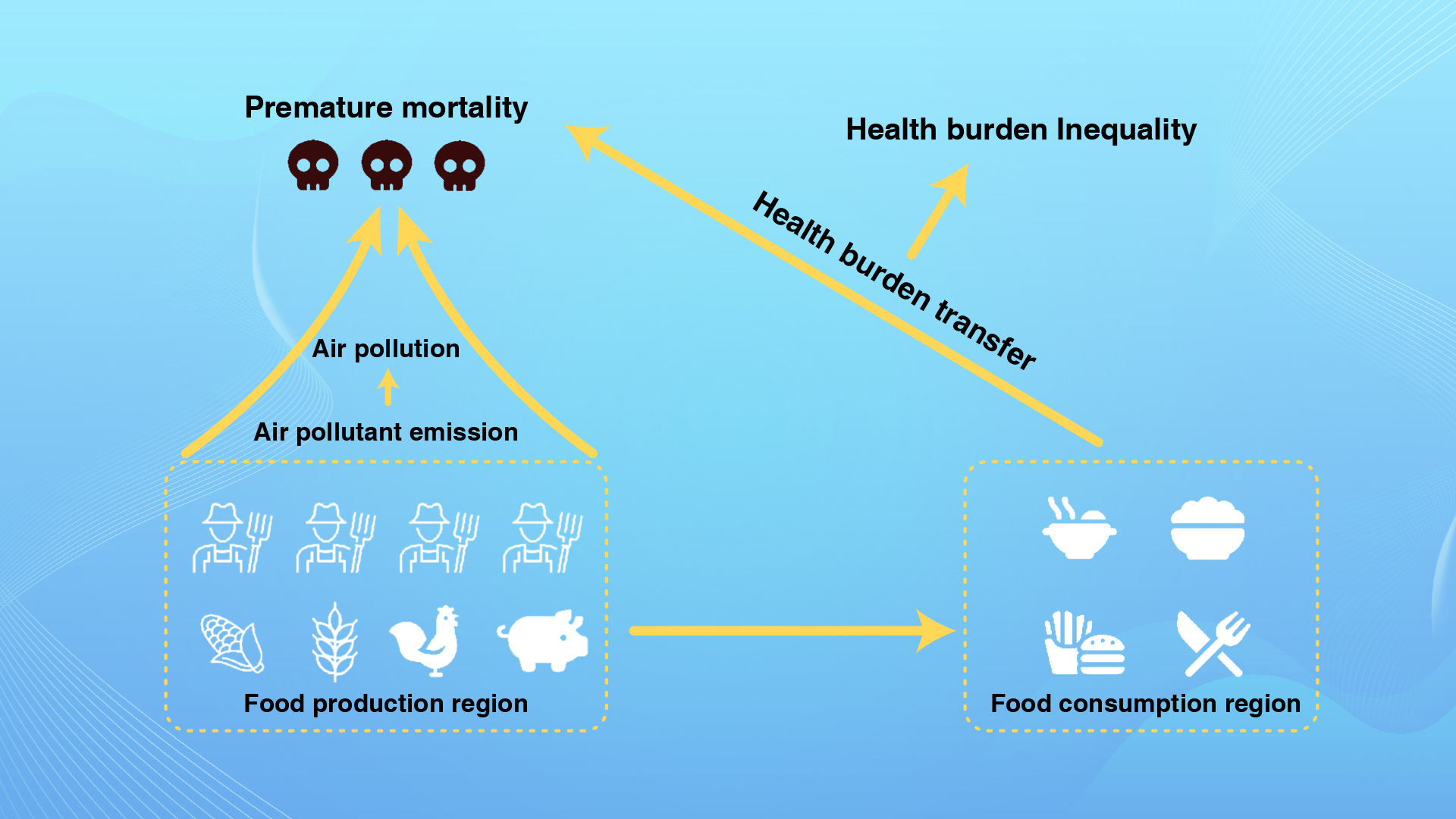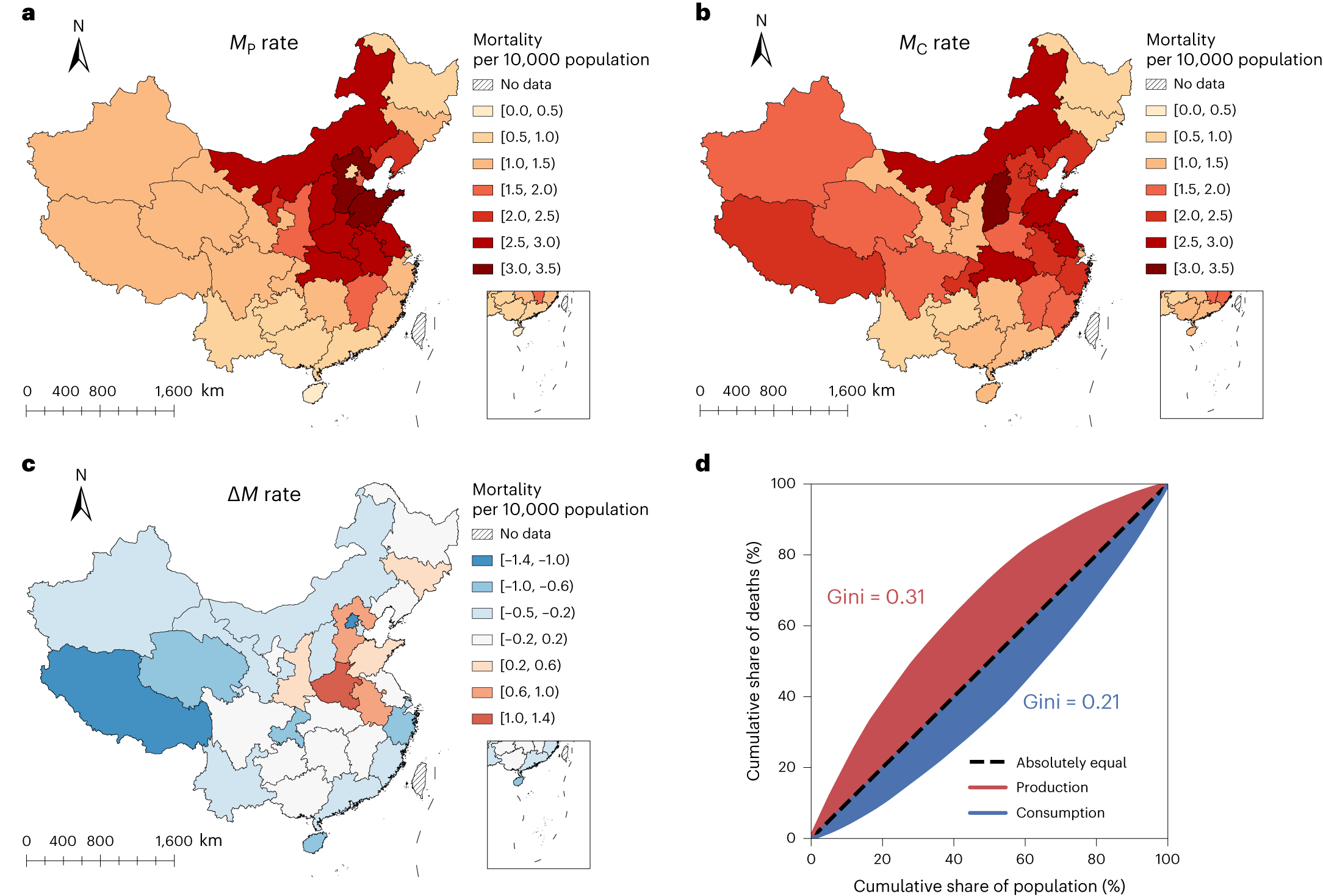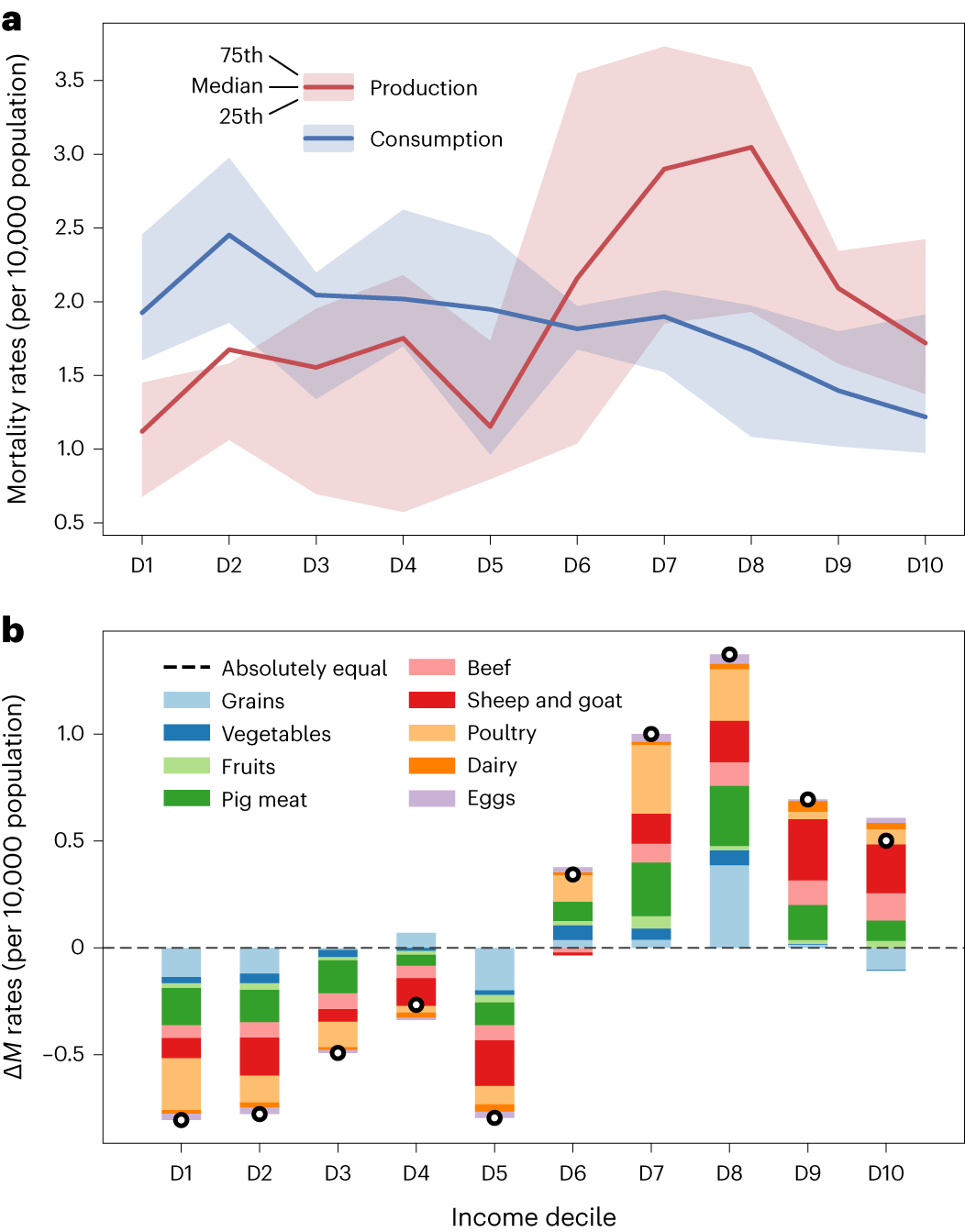Agricultural food production significantly contributes to atmospheric pollution, primarily releasing ammonia (NH3), which poses health damage to the population. As agriculture intensifies and the food supply chain evolves, there is a notable increase in both food production quantity and diversity. However, this progress results in markable health damages in food production regions, while residents in food consumption regions tend to evade these damages, creating health inequalities between the two regions.
Aligned with the United Nations Sustainable Development Goals (SDGs), modern food systems must simultaneously meet global nutritional needs, reduce environmental impact, and address inequalities in population health damage. The need to precisely assess the health damages attributed to the food system’s inequalities is essential. Yet, key factors such as food categories, spatial heterogeneity, and potential driving factors remain insufficiently explored. Furthermore, it is unclear whether existing interventions within the food system can effectively reduce these inequalities.

Led by Associate Professor Huizhong Shen from the School of Environmental Science and Engineering (ESE) at the Southern University of Science and Technology (SUSTech), a collaborative effort with researchers from Peking University, University College London, Cardiff University, and other institutions recently published a paper unveiling the inequality of health burdens related to air quality caused by the food system, utilizing an ensemble inequality assessment model.
The paper, entitled “Health burden from food systems is highly unequal across income groups”, has been published in Nature Food.
The study reveals that China’s food system led to 0.26 million premature deaths in 2017. The majority of these deaths, 74%, were attributed to NH3 emissions from grain cultivation and livestock farming, with the remaining 26% arising from food processing, packaging, transportation, and retail (Figure 1). The inequality in health burdens related to air quality was found to be slightly higher in food production than consumption, influenced by agricultural intensification and dietary patterns.

Figure 1. Provincial-level distributions and inequalities of premature mortalities due to food production and consumption in China
Furthermore, the research identifies specific food types contributing to higher inequality, with grains, poultry, and pig meat ranking as the top three (Figure 2). Vegetables, fruits, and non-meat animal-sourced food exhibited lower inequality.

Figure 2. Inequality within the food system across food types
The study also sheds light on the inequality in health burden across different income groups, revealing that low-income groups bear a 70% higher air-pollution-related health burden from food production than from food consumption, while high-income groups benefit from a 29% lower health burden relative to their food consumption (Figure 3). It is noteworthy that this inequality is not limited to China alone; the research has identified similar trends through a global analysis.

Figure 3. Mortality disparity across income groups
Furthermore, the researchers developed a series of intervention strategies for the food system from both the perspectives of food production and consumption. The results indicate that comprehensive interventions targeting both production and consumption sides can effectively reduce health damages and concurrently mitigate associated inequalities, while singular interventions exhibit limited efficacy.
Ph.D. student Lianming Zheng from the School of ESE at SUSTech is the first author of this paper. Associate Professor Shen Huizhong, Professor Zhou Feng from Peking University, Professor Meng Jing from University College London, and Dr. He Pan from Cardiff University serve as co-corresponding authors, and SUSTech is the first affiliation.
The research work was supported by the National Natural Science Foundation of China (NSFC), Ministry of Science and Technology of the People’s Republic of China, Shenzhen Science and Technology Program, Shenzhen Key Laboratory of Precision Measurement and Early Warning Technology for Urban Environmental Health Risks, Department of Science and Technology of Guangdong Province, Department of Education of Guangdong Province, and the Center for Computational Science and Engineering at SUSTech.
Paper link: https://www.nature.com/articles/s43016-024-00946-7
To read all stories about SUSTech science, subscribe to the monthly SUSTech Newsletter.
Proofread ByAdrian Cremin, Yingying XIA
Photo BySchool of Environmental Science and Engineering